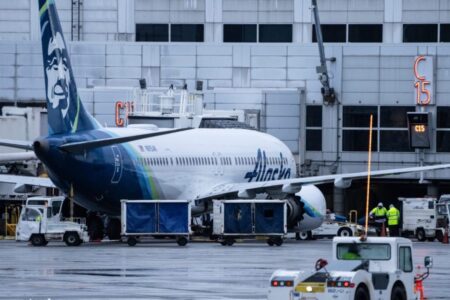The National Transportation Safety Board He appealed to the public to help locate the missing door that suffered a blowout on Alaska Airlines Flight 1282 as the agency began the process of finding out what went wrong.
“We’ve now determined based on our definition of substantial damage that this is an accident, not an incident,” NTSB chair Jennifer Homendy said at a Saturday night press briefing in Portland, Oregon. “We are very fortunate this didn’t end up in something more tragic.”
The plane was carrying 171 passengers and six crew from Portland to Ontario, California on Jan. 5 when the crew reported a pressurization issue. What followed was a rear left part of the fuselage blowing out, leaving the hole resembling the opening for a door. The aircraft returned to Portland about 20 minutes after takeoff, having reached an altitude of about 16,000 feet (4,800 metres).
Read More: After Boeing 737 Max planes crashed and killed hundreds of people about five years ago, one just lost a chunk of its fuselage in midair
On the Max 9, Boeing includes a cabin exit door located just behind the wings, but before the rear exit door. This is activated in dense seating layouts to meet evacuation requirements. The doors are not activated on Alaska Air aircraft and are permanently “plugged.”
No one was seated in the immediate two seats — 26 A and B — nearest the plugged door, Homendy said. The Federal Bureau of Investigation is also helping local law enforcement track down the door.
Flight data and cockpit voice recorders from the plane will be sent to a laboratory Sunday for analysis, the NTSB said.
Homendy said the NTSB investigation will include a look at the Federal Aviation Administration‘s oversight of Boeing Co. and the manufacturer’s process for planemaking on the affected aircraft type. She stressed everything would be studied at the early stages, and nothing would be excluded until it could hone in on the causes of interest.
